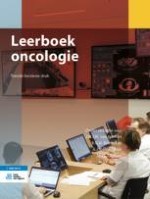Samenvatting
Preventie heeft de afgelopen decennia niet echt in de schijnwerpers gestaan, maar het tij is aan het keren. Door de sterke vergrijzing van de Nederlandse bevolking tot ongeveer 2040, de (dure) technologische vooruitgang en het toenemende tekort aan personeel in de zorg is er een groeiend besef dat preventie geen sluitpost mag zijn. Preventie kan zich richten op verschillende fases van de ziekte. Primaire preventie richt zich op de algemene bevolking of speciale risicogroepen die nog geen kanker hebben. Secundaire preventie op groepen in de bevolking die mogelijk al een voorstadium of vroeg stadium van de ziekte hebben. En tertiaire preventie op het voorkómen van erger bij mensen die al met de ziekte zijn gediagnosticeerd. Op het terrein van primaire preventie is al veel bereikt. Denk bijvoorbeeld aan het percentage volwassen rokers dat sinds 1955 tot nu van 95 % tot 23 % is gedaald. Of aan de beschermende maatregelen tegen asbestblootstelling of radioactieve straling. Maar de uitdagingen blijven groot. 23 % rookt dus nog steeds. Meer dan 50 % van de volwassen bevolking heeft overgewicht, 14 % zelfs obesitas. En 56 % voldoet niet aan de beweegrichtlijnen van de Gezondheidsraad. Dertig tot veertig procent van alle nieuwe kankerdiagnoses is leefstijlgerelateerd dus met preventie lijkt er nog veel te halen. Gedragsverandering is echter niet eenvoudig. De leefstijl van mensen wordt bepaald door individuele determinanten van gedrag zoals kennis, attitudes en vaardigheden. Maar ook door de sociale omgeving (familie, vrienden), organisaties (school, werkplek), gemeenschappen (dorpen, wijken), alsmede de grotere beleidscontext in Nederland en de Europese Unie (regelgeving, voorzieningen). Al deze factoren interacteren met elkaar. Het ontwikkelen van effectieve interventies is daardoor ingewikkeld en vereist expertise en betrokkenheid van vele partijen. Temeer omdat de grootste problemen in de maatschappij liggen bij sociaaleconomische groepen die het moeilijkst te bereiken en beïnvloeden zijn. Sinds 2010 kennen we ook een heel andere vorm van primaire preventie: vaccinatie. Jonge meisjes (en vanaf 2021 ook jongens) worden sinds die tijd gevaccineerd voor het humaan papillomavirus ter preventie van baarmoederhalskanker en andere anogenitale tumoren. Maar ook hierbij is het een uitdaging om iedereen ervan te overtuigen dat vaccinatie goed is. Het lijkt logisch om een patiënt met kanker altijd zo vroeg mogelijk te willen diagnosticeren. Toch betekent dat niet dat programma’s voor vroegdiagnostiek, oftewel secundaire preventie, altijd zinvol zijn. Integendeel. Dergelijke programma’s hebben ook nadelen. In Nederland gebruikt de Gezondheidsraad de criteria van Wilson en Jungner om systematisch de voordelen tegen de nadelen af te wegen. Dat heeft tot dusverre geresulteerd in screeningsprogramma’s voor borstkanker, baarmoederhalskanker en dikkedarmkanker. Voor die vormen van kanker wegen de voordelen van screening op tegen de nadelen, hoewel niet alle tegenstanders daarvan overtuigd zijn. Momenteel wordt veel onderzoek gedaan naar het nut van extra programma’s zoals voor prostaat- en longkanker. Anders dan bij andere ziekten zoals hart- en vaatziekten, diabetes type 2 en COPD is er weinig bekend over het nut van tertiaire preventie bij kanker. Waar een patiënt met een myocardinfarct medicatie en trainingsprogramma’s krijgt aangereikt om een tweede infarct te voorkomen ligt de focus bij een kankerpatiënt op de diagnose en behandeling van de tumor zelf. Toch begint ook hier het tij te keren. Met prehabilitatieprogramma’s kan een patiënt in een betere conditie worden gebracht, zodat er minder complicaties optreden bij de behandeling. Of een betere leefstijl ook leidt tot een betere ziektespecifieke uitkomst zoals een lagere recidiefkans en een betere ziektespecifieke overleving, is niet echt bekend. Maar er komen wel steeds meer aanwijzingen dat een prehabilitatieprogramma er ook voor kan zorgen dat een patiënt de zware behandeling volledig kan doorstaan, waardoor de prognose verbetert. En dat ook een langetermijn verbetering van leefstijl zo’n effect kan hebben, bijvoorbeeld door een positieve invloed op het afweersysteem van de patiënt. Dit zou de patiënt enige invloed op zijn eigen prognose kunnen teruggeven. Er is echter nog veel extra bewijs nodig, voordat alle zorgverleners met evenveel enthousiasme leefstijl bespreken met kankerpatiënten als ze dat doen bij patiënten met hart- en vaatziekten.
